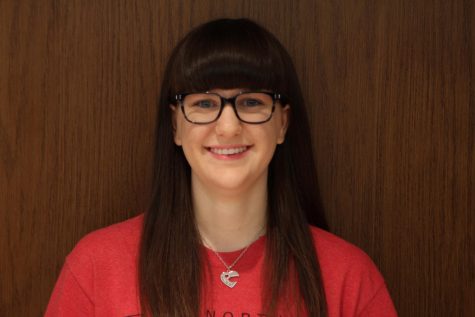The fight for student journalists’ rights
May 15, 2018
If you had googled my name a few weeks ago, the only pertinent result would have been a photo from the county spelling bee in 6th grade. Now I’m mentioned by name in a multitude of articles from news outlets across the country and the video of my speech at a board of education meeting has been reposted on social media more times than I could count. So, how did this happen and what is it all about?
As I’m sure most of the school knows, SM North was one of thousands of schools across the country to participate in the National School Walkout on April 20. The event was planned by a group of students who worked closely with administration in an effort to foster a cooperative atmosphere. However, administration took it upon themselves to censor what could be said at the walkout, limiting the number of students who could speak and what they were allowed to say. So, while the administration-approved walkout was wrapping up on the day of the national movement, a group of 100 or so students made the decision to continue protesting on the front lawn.
Yes, I was part of that group. No, this column isn’t about the protest.
As the second walkout began on the front lawn of the school, student photographers from the journalism department were taking photos of the event. However, several minutes into the protest, an associate principal yelled for the photojournalists to go inside. A few of them complied. However, when one journalist continued to photograph the protest, the administrator took her camera away, preventing her from covering the event.
The action of sending several student photographers inside and confiscating the camera from another represents a clear violation of Section 3(a) of the Kansas Student Publications Act, which reads, “Material shall not be suppressed solely because it involves political or controversial subject matter.” By preventing student journalists from taking photos of a controversial event, the associate principal violated the rights given to student journalists in the state of Kansas. I raised this concern during the public comments section of an SMSD Board of Education meeting on April 23. To the credit of our interim superintendent, he thanked me for speaking and personally apologized for the actions taken against student photographers at North.
Now, the battle for student journalists’ rights is far from over. Another North administrator I’ve spoken with has made the suggestion that student journalists are only journalists when they’re in journalism class; the rest of the time, they’re just students. As such, they have no right to take photos outside of their time as journalists. If that was true, would we have high-quality photos of athletic events, theatrical performances or any of the numerous activities North students are involved in? The photos of North activities in the yearbook and newspaper are thanks to dedicated photographers who work around the clock to document important events at North, regardless of whether those events occur during the timeframe of their scheduled photojournalism class. Student journalists do not stop being journalists just because they are not in a journalism class all the time, just like administrators don’t stop being administrators just because they clock out and leave school at the end of each day.
I have also heard the argument that the photographers from the walkout are not protected by the Kansas Student Publications Act because the act does not protect content which, “creates material or substantial disruption of the normal school activity”. The unscheduled protest did, arguably, cause a disruption of the school day. However, the protesters and the student photographers were two very distinct groups of people. Protesters caused ‘disruption’ by cheering; photographers were standing quietly around the edges of the crowd taking pictures of the event. Nothing about the photographers’ actions was disruptive; they were merely acting in a journalistic capacity, taking pictures of an event that affected students’ lives. This is protected by the law.
When students break a school rule, there are consequences. School administration should be held to the same standard. They aren’t required to like student journalists or even respect them, but they are required to obey Kansas law. Before this, I have had a good relationship with school administration, and for the most part, I still do. Because of this, I choose to believe that the law was broken simply because there was a lack of knowledge about Kansas laws. If this is the case, there should be training in place to educate administrators about the rights of student journalists in the state of Kansas. Because the law, like student journalists, deserves to be respected.

